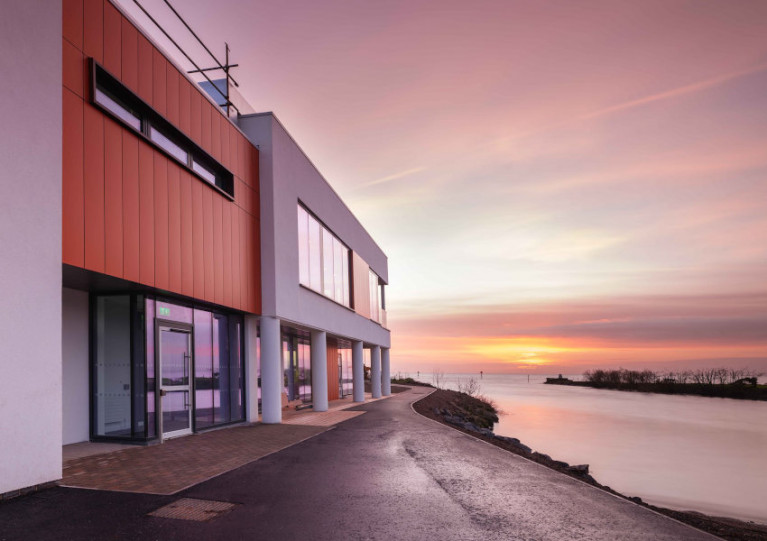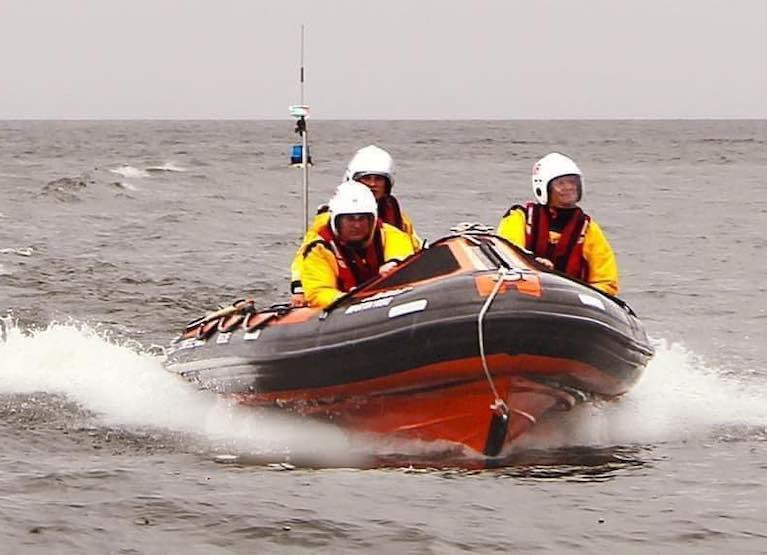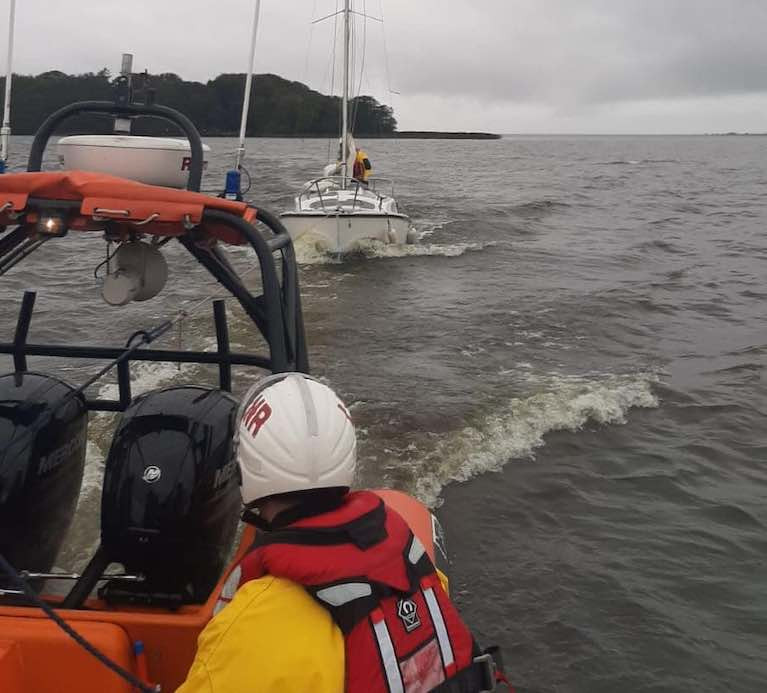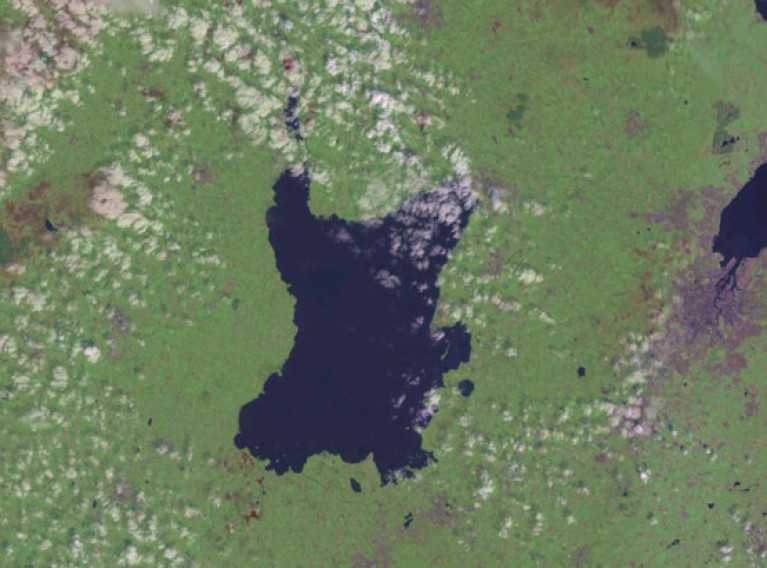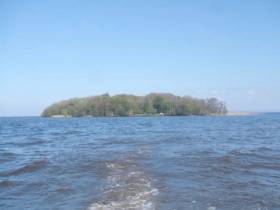Displaying items by tag: Lough Neagh
Lough Neagh Rescue Tasked to Broken Down Motor Boat
In the early evening of last Sunday (20th June) Lough Neagh rescue was tasked to a broken down motorboat with two children, three adults and a dog on board. The vessel had been making its way from Battery Harbour on the west shore of the Lough to Gawley's Gate in the southeast corner.
Lough Neagh is the largest freshwater lake by area in the British Isles at 392 square kilometres.
The Lifeboats launched and searched the broken-down boat in rough conditions and large swells. It had drifted quite a few miles off course. Once located, a crew member went aboard to check on the casualties and transferred one adult onto the lifeboat to be brought to shore.
The other lifeboat rigged a tow and brought the vessel to Maghery in the southwest corner as this was the safest option due to the wind direction and large swells. It was handed over to the awaiting Coastguard team.
Lough Neagh Rescue is a voluntary search and rescue organisation based on the shores of Lough Neagh.
Lough Neagh Solo Sailor Brought Back to Harbour at Kinnego Bay
Lough Neagh Rescue was paged on the 9th April to the aid of a lone yachtsman whose vessel had engine difficulties just outside Kinnego Bay on the southern shore of Lough Neagh in Northern Ireland.
On scene, the lifeboats found the solo sailor safe and well and he was able to continue in his boat for a short time under its own power. He was escorted into Kinnego Bay but a tow was needed when the vessel lost power again at the entrance of the Marina, the largest on the Lough.
The vessel was brought safely to the jetty and moored before the lifeboats were stood down and returned to base.
Lough Neagh Rescue was called last Friday evening to a 24ft cruiser that had lost power.
The vessel was located about 1.5 nautical miles to the east of Ballyronan on the west side of Lough Neagh.
Lifeboats were launched and located the vessel with two people on both of whom were safe and well. A towline was secured, and the vessel towed into Ballyronan Marina, where it was safely moored to the jetty.
The lifeboats returned to base, were cleaned, refuelled and are ready for the next tasking.
Lough Neagh Rescue is a Limited Company and a registered Charity. It is made up of 60 highly trained volunteers, four lifeboats, two vans and an off-road jeep, operating on the largest lake by area in the British Isles with a surface area of 151 square miles.
Lough Neagh Tourism Projects get €66k Funding Commitment
Antrim and Newtownabbey Borough Council has agreed funding of £66,000 for tourism projects by the Lough Neagh Partnership over the next three years, as the News Letter reports.
Current projects at the north end of Lough Neagh include a new sculpture, interpretive display and improvement works at The Gateway centre in Antrim, which are scheduled to be completed by the end of March.
And recently a new boardwalk and path were completed at the adjacent Lough Shore Park, where the Six Mile Water meets the lough.
Mayor of Antrim and Newtownabbey, Councillor Jim Montgomery, said: “Lough Neagh is one of the greatest tourism assets, not only for our borough but across Northern Ireland.”
The News Letter has more on the story HERE.
Lough Neagh Rescue Aid One person & Dog in Bayliner Speedboat
Yesterday (Sunday 18th) Lough Neagh Rescue came to the aid of a Bayliner speedboat with one person and a dog on board in the vicinity of Rams Island on the Lough. The vessel was experiencing engine difficulties.
Rams Island is about one mile long by a quarter of a mile wide and is the largest island on Lough Neagh. It lies approximately one mile offshore from Lennymore Bay and Sandy Bay on the eastern shore.
Lifeboats launched and proceeded to the area, quickly locating the Bayliner on the west of the island. When they arrived one crew member boarded the casualty vessel, a tow line was prepared and the lifeboat towed the vessel safely to the 60 berth Sandy Bay marina, just opposite the island. When the vessel was moored the Lifeboats were stood down, returned to base and prepared for the next tasking.
Last Sunday (4th October) Lough Neagh Rescue Lifeboat was tasked to two people stranded on Coney Island as their vessel had mechanical issues. Coney Island is owned by the National Trust and lies in the south-west corner of Lough Neagh about 1km from Maghery, a village on the Co Armagh shore.
Due to the adverse weather conditions, it was decided to take the persons off the island and bring them to Maghery. With the two people safely ashore and handed into the care of the Lough Neagh Coastguard team it was decided that the vessel could be brought to Maghery also, so the crew went back to the island, rigged a tow and brought the casualty vessel safely to the shore in Maghery.
Lough Neagh Rescue is a charitable 24-hour voluntary search and rescue service operating from three stations on the Lough - one at Ardboe in County Tyrone, one at Antrim in the North and the other from Kinnego Marina in the south near Lurgan, County Armagh.
Lough Neagh is the largest lake in the British Isles being about 32 km long and 14 km wide. It is mostly shallow with an average depth of 9 m. It is very exposed and in windy conditions can become extremely rough very quickly. It is used extensively by a wide variety of recreation and commercial craft with two sailing clubs, one at either end – Antrim Boat Club in the north and Lough Neagh Sailing Club at Kinnego in the south.
Campaigners Hit Out At Lough Neagh Sand Dredging Approval
Environmental campaigners have hit out at a Stormont decision to approve sand dredging in Lough Neagh, as the Belfast Telegraph reports.
Sand dredging has been practiced in Lough Neagh since the 1930s, with no permission needed until after the lough was designated as a Special Protection Area for wildlife in 1999.
Most recently the practice has been subject of a years-long legal battle, as previously reported on Afloat.ie, with Friends of the Earth claiming that as much as 1.5 million tonnes of sand are removed from the lough each year.
The final say on the matter was left to Northern Ireland’s Department of Infrastructure, whose minister Nichola Mallon signed off on the approval and said the decision was a “finely balanced” one “where I had to weigh up the various benefits with the potential for harm to the designation features of the lough”.
Among those criticising the move was Green Party NI leader Clare Bailey.
She said that sand dredging has “a devastating impact on the entire ecosystem of the lough”, and claimed the situation underscored the notion that “Northern Ireland is disintegrating into an environmental wasteland”.
The Belfast Telegraph has more on the story HERE.
An open water swimmer has hailed her crossing of Lough Neagh as a triumph — despite being whisked to hospital after breathing water into her lungs.
As BelfastLive reports, Lurgan woman Alison O’Hagan was 13km into her 14km endurance swim on Saturday morning (11 July) when she inadvertently took a lungful of water in a sudden swell.
A paramedic on the RIB accompanying O’Hagan throughout her challenge was swift to act, and got her ashore and into an ambulance within minutes.
O’Hagan — who had trained for 18 months for her long-distance swimming feat — underwent a series of tests in hospital and was discharged yesterday (Monday 13 July), being told “everything is great and I have a good strong heart”.
BelfastLive has more on the story HERE.
Giant Irish Elk Skull & Antlers Fished From Lough Neagh
#LoughNeagh - Ten thousand years after the Irish elk became extinct, the remains of one of its number have been fished out of Lough Neagh this week.
As BelfastLive reports, the remarkable find — comprising the whole skull and antlers of the giant deer — was caught in the net of Ardboe, Co Tyrone fisherman Raymond McElroy somewhere between Salterstown Castle and Ballyronan on Wednesday 5 September.
A jawbone taken from the lough in the same area four years ago has been dated to at least 14,000 years — and it’s possible the latest discovery could be from the same animal.
BelfastLive has more on the story HERE.
Lough Neagh Island Seeks New Caretaker
#LoughNeagh - The UK’s National Trust is seeking a new warden — or wardens — to care for the historic Coney Island in Lough Neagh, as Belfast Live reports.
The island’s restored 19th-century cottage, which until last year was home to warden Peter McClelland for almost two decades, is now available for rent.
“If you’re into gaming and watching box-sets this probably is not the place for you,” says the trust’s Edward Mason on the house, which is powered by a generator and heated by a wood-burning stove.
There will also be plenty of chores to do throughout the seasons, not least being handy with an axe.
But the mainland, an hour from Belfast, is only a 10-minute boat trip away.
And for nature lovers, the nine-acre island — also an important Neolithic site — could make the perfect home away from it all.
Belfast Live has more on the story HERE.


























